#vampire fact
Text
Vampire Fact #12 - How to Identify a Vampire
I’m back with another vampire fact! In fact, all folklore facts are now back, so expect to see more of these!
The winner of the last vampire fact’s Patreon poll was “how to identify a vampire” (that was a hot minute ago because I had to take a break from these), very much like my previous werewolf fact on how to identify a werewolf.
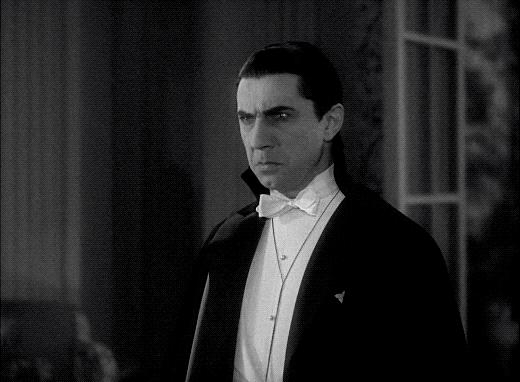
I won’t be covering pop culture vampires in detail/providing a list of how to identify vampires in pop culture. I’m not so deeply versed in vampire pop culture as I am werewolf pop culture; I only study vampire folklore, not their modern media, unlike with werewolves. I familiar with some of it, for sure, but I’d never pretend to be any kind of expert on broader vampire pop culture.
Please note the following is not to be considered a 100% complete list, as there are many, many vampire legends out there! This is just several of the more “popular” methods of identification and perhaps some of the better-known.
Some Folklore Vampire Identifiers
Pale - There are some stories in which vampires actually are pale in folklore, and in which being particularly pale might be a sign of vampirism.
Reddish or purplish skin - Conversely, vampires can also be identified - especially in Eastern European regions - by having “reddish” or “purplish” skin and perhaps even a swollen appearance. All of this comes from drinking too much blood. It’s basically the opposite of being pale: they look flushed and reddened instead of pallid. This one was not uncommon.
Red eyes - This didn’t always mean red eyes as in red irises, like in a lot of popular culture. Often, it could also mean similarly to the flushed appearance: it meant bloodshot eyes, eyes full of blood. But some might also be interpreted as having red irises, and let’s face it, red irises are very cool.
Unnaturally beautiful - This one isn’t uncommon in legends, either: unnatural beauty. Vampires in many stories seduced their victims, and it wasn’t too unusual for things to get steamy, either. Again with the conversely, though...
Unnaturally hideous - Vampires can also be unnaturally hideous. We’re talking like really nasty, because they’re monsters - often these are the monster vampires, demons, not vampires that were ever actually human. However, sometimes signs of being a vampire could also be just human traits that are considered hideous, such as having a caul, being exceptionally hairy (judgmental much?), etc.
Only comes out at night - This is an obvious one in both popular culture and folklore. Often in folklore, however, vampires also only came out at night because it was the only time they actually left their graves. Vampires didn’t come out only at night because they were burned by the sun in folklore (they actually weren’t!), but because they were nocturnal.
Signs of undeath in coffin - Often, vampires were identified via actually unearthing the coffin and taking a look at the corpse. There were many signs that might show a corpse was actually leaving the grave as a vampire, such as growth of the hair or fingernails, the eyes being open or partially open, blood around the mouth, reddened eyes, or a swollen reddish or purplish appearance, as if the corpse is engorged with blood.
Well, there’s a few, at least! There are so many vampire legends I won’t cover “all” of them until, you know, I write the Vampire Facts book someday (maybe? Werewolf Facts the book is definitely on the way, though). At any rate, be sure to tell all your friends how to find vampires today by reblogging this post!
Oh, and no, fangs are not included in folklore.
Also, if you are curious about vampire weaknesses, be sure to check out my post on that, too, as well as the vampire masterlist (linked at the bottom of this post)!
Until next time!
( If you like my blog, be sure to follow me here and elsewhere for more folklore and fiction, including books, especially on werewolves! And please consider donating and/or supporting me on Patreon - not only will you help me keep this blog running, but patrons get cool stuff and rewards in return! You’ll find lots more cool stuff over on my personal website.
maverickwerewolf.com — Patreon — Wulfgard — Werewolf Fact Masterlist — Twitter — Vampire Fact Masterlist )
#vampire#vampires#vampirism#vampire friday#vampire fact#vampire facts#folklore#folklore fact#folklore facts#mythology#monsters#monster lore#folklore thursday#folklorethursday#undead#legends
63 notes
·
View notes
Text

#facts#funny#lol#haha#humor#meme#memes#goth#gothic#tweet#twitter#funny memes#alternative#grunge#soft grunge#vampires#vampirecore
26K notes
·
View notes
Text
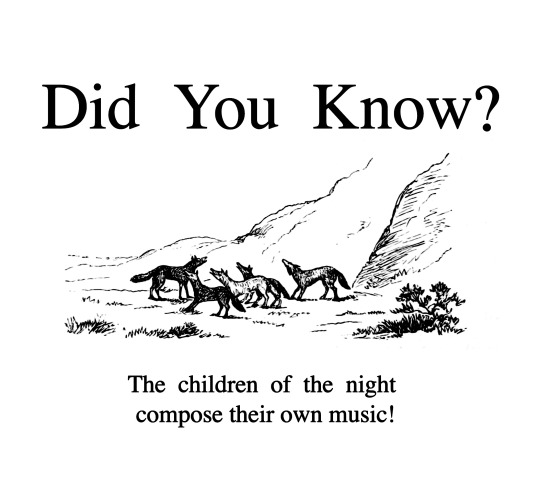
#Did You Know?#facts#trivia#wolves#wolf#children of the night#Dracula#Bram Stoker#vampire#vampires#music
4K notes
·
View notes
Text
Vampirism is such slut behavior. Oh ur immortal and you bite people to stay alive? U literally suck people to not die? Ur a “creature of the night”? U have fangs? Slut. Bite me.
#I would love to be bitten#especially by a vampire#suck my blood actually#it’s a bonding moment#queer#vampire#I have a thing for biting people#I have a thing for being bitten#biting in general#chew on me please#sharp teeth are hot it’s a fact#vampires#lgbtq#mlm#mlm vampire
8K notes
·
View notes
Text

in paris you gotta sleep with one eye open
#she smoked too tough. her swag was too different. her bitch was too bad. they’re gonna kill her#kaitsart#gif#interview with the vampire#interview with the vampire 2022#interview with the vampire fanart#iwtv#claudia de pointe du lac#claudia iwtv#delainey hayles#fun fact i actually finished this yesterday but didnt wanna double post lol#no one point out the eensy weensy mistake i’m not fixing it 😔😔
2K notes
·
View notes
Text
if I had a nickel for every time seth green played the nice boyfriend of the bookish, nerdy girl who fights supernatural beings with her group of friends (called the scooby gang) led by her pretty but badass best friend (played by sarah michelle gellar) before she eventually came out as a lesbian, I'd have two nickels.
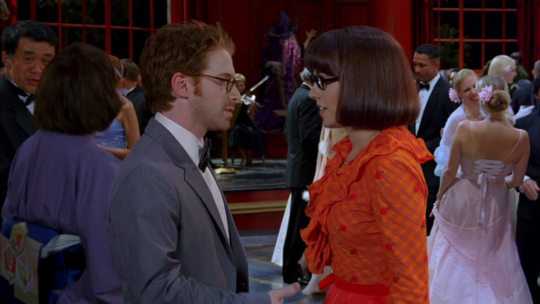
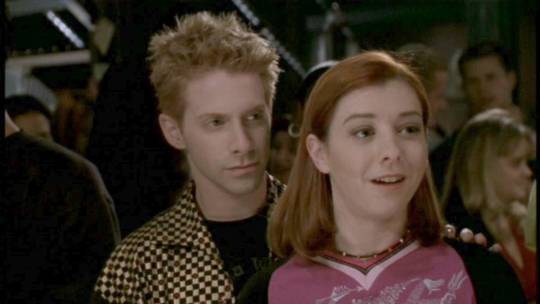
#it's just SO funny#btvs#buffy the vampire slayer#scooby doo#trick or treat scooby doo#scooby doo 2022#velma#velma scooby doo#lesbian velma#willow rosenberg#seth green#willow and oz#willow x tara#fun fact almost all of the girls in this nerdy student org I was in in college crushed on the same nerdy nice red haired guy too#and most of them were bi/pan/ace or came out as lesbian later on#what an enigma#velma dinkley
30K notes
·
View notes
Text


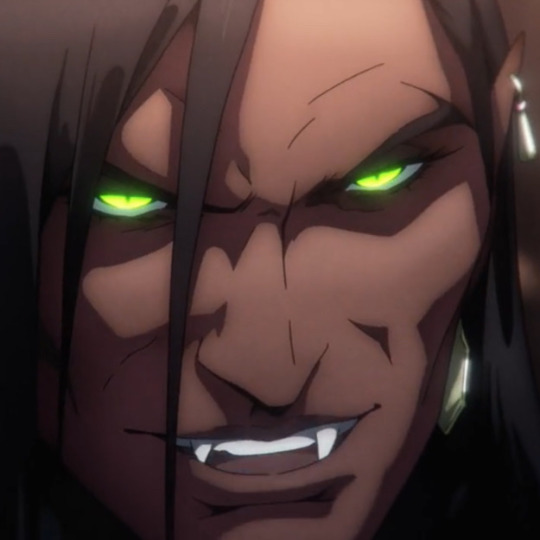
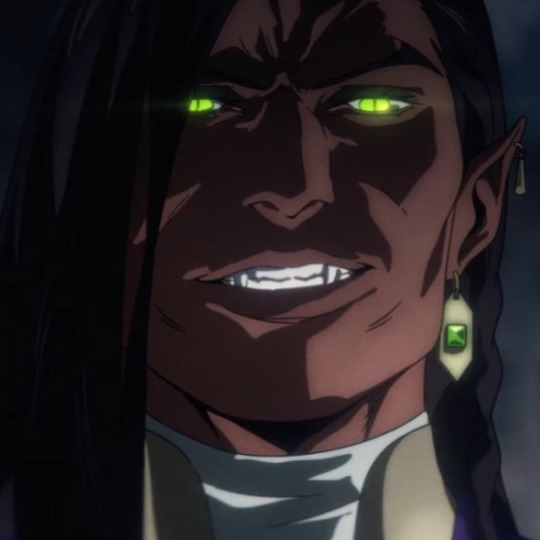
his glowy green eyes mean everything to me, actually.
#he is VERY jaguar coded#i know he’s a vampire and he’s evil#and he killed julia belmont but you don’t have all the facts#…i love him okay#castlevania nocturne#castlevania#castlevania spoilers#olrox#castlevania olrox
3K notes
·
View notes
Text
forever obsessed with dynamics between vampires, specifically that of a maker and fledgling, as a way to explore abuse. the creation of a vampire itself can so easily be a literalization of the lasting impacts of trauma and also much more simply the ways a perpetrator might shape their victim’s very identity. the extremes of isolation in the way that the new vampire, in most narratives, must cut all ties to their mortal life, or else go through an elaborate charade to maintain the facade of humanity, while forever still being removed from it. and the sheer dependence and vulnerability of being in an entirely new state of being, wholly uncertain of what it entails, and relying on another person to define… everything.
#or just the moral dilemmas#rewatching amc interview is kind of making me insane#that moment in episode two when louis is looking for a sort of assurance in the fact that lestat may actually have some good in him#look at how he cares about music look at the simple wondrous things that can bring him joy#and then the immediate dread when the opera performance turns out to be imperfect because he knows how lestat will react to *that*#I think there’s also something really interesting in the highlighting of lestat upbraids the less skilled singer before killing him#(slowly)#but also I will wait to watch more before I articulate my thoughts#vampires#interview with the vampire#amc interview with the vampire#i ramble sometimes#I do still find the lestat and claudia film and novel dynamic by far the most compelling for how she tries to usurp him but almost to be him#but I’m enjoying this#I’m very curious if I will like show claudia more on rewatch#the movie always resonated most with me (sue me lol) because there seemed to be more simultaneous fondness and attachment even at the end
4K notes
·
View notes
Text

I loved the first commission so much, I couldn't resist ordering another one as a parallel of sorts! This lovely drawing is by @toktopus-art. It's based on a scene from Chapter 26 of my vamp!Eddie/Steve-gets-Vecna'd fic, laughing at the broken glass.
Scene excerpt is below, and the AO3 link to the fic is on my pinned post.
Steve wished they could just stay like this, but there were only two more songs left on this A-side.
“Hey, can I see your bracelet?” Eddie asked. If not for his all-too-casual tone, Steve wouldn’t have suspected anything.
“Pulling out all the stops, huh?” Steve asked wryly. Eddie flashed a shameless grin at him. Chuckling, Steve tugged his sleeve down before lifting up his wrist. To his pleasant surprise, the glow-in-the-dark effect was actually noticeable. Eddie took a moment to share in the admiration of the bracelet before grabbing Steve’s hand and tugging it down.
“This is better, yeah?” Eddie asked.
“Huh?” Steve turned to look at him again, but Eddie was staring straight up at the sky.
“Than just sitting in your car in the freezing cold by yourself, I mean.”
“I had Freddie Mercury with me.”
“I’m serious.” Eddie finally turned his head to face Steve again. His expression certainly matched his words. Steve couldn’t help but tense up at the shift in tone, though he was swiftly eased by the way Eddie’s thumb brushed across his knuckles.
“I...hate that you even have to ask.” Steve managed to smile, even though Eddie frowned at that. “Yeah, this is better.”
One song left. It wasn’t fair.
#steddie#steve harrington#eddie munson#stranger things#latbg#art#steve#eddie#btw the canine on the car hood is a coywolf named lucy#eddie accidentally summoned her through vampire magic and now she won't leave steve alone lol#and the bracelet mentioned is a friendship bracelet matching with robin#i debated including it but it wouldn't rly be visible#since steve's sleeve naturally went back down#fun fact i based it off a specific one from claire's#ANYWAY i think i'm done now LOL unless there's a specific scene that anyone wants to see but none are immediately coming to mind for me so
3K notes
·
View notes
Text
Vampire Fact #14 - Association with Disease
Much like werewolves, vampirism is sometimes referred to now as a "disease" rather than a "curse" (although let's face it, werewolves face that far worse and more often than vampires do; they're often little more than a plague now). How accurate is that to folklore?
Well, it isn't if you're referring to the curse of vampirism itself, but vampires being associated with illness and disease in general - such as plagues of rats, illnesses spreading mysteriously, diseased air, swarms of flies, and many more examples - does indeed have a much older basis... Let's dive right in.

Firstly, just to get this off the table, no, being a vampire was not considered a "disease" in folklore, generally speaking. In fact, vampires in folklore generally came in two types: people who were cursed to rise from death - or demons, individuals that were never human in the first place. Neither of these were considered "diseased" in a traditional plague or illness fashion. The former were, however, considered cursed or even possessed in some way.
However, scholars often like to speculate what caused a belief in vampires in the first place, and much like they do with werewolves, this - especially in the mid to late 1800s - caused an uproar of the belief in vampires existing being attributed to individuals with certain diseases, like porphyria, among many, many others.
It, of course, isn't uncommon for scholars to point to diseases to "explain" and "justify" a belief in monsters and other legends. In later historical periods, especially starting around the 1500s and gaining more traction in the following centuries, perhaps reaching its height in the 1800s but still going on today, it became wildly popular for scholars to come up with all manner of "new" "explanations" for assorted legends and beliefs therein. Vampires are no different; same with werewolves and many other things.
Naturally, if you see an overwhelming amount of scholarship and publications linking something like vampires with disease, you're going to see that leak over into popular culture. That does not, however, make it "folkloric," if I may use such a term. That is to say, during the time periods in which they were believed in according to the legends we're drawing from, being a vampire was not associated with having a "vampire disease" or any disease at all.
Vampires in folklore, in fact, often couldn't "reproduce" or spread their curse. This was not always strictly the case, but by and large, that's a very modern pop culture concept.
That being said, however, vampires in folklore were not infrequently associated with causing disease (unrelated to causing "vampirism") or associated with the presence of disease or the concept of it in general. This doesn't mean a "vampire disease," as in spreading the state of becoming a vampire to others through disease, it means illness.
There are several examples of this...
Firstly, Montague Summers offers some examples in his book Vampires and Vampirism. Summers is one of the foremost scholars on vampires, but more on him another time. He mentions the fact that vampires are often associated with turning into mist, and he draws a connection between them such as...
all mists and gaseous marsh-lights are connected with the belief in vampires and spectres which convey disease. Since the effluvia, the vapour and haze from a swamp or quaggy ground are notoriously unhealthy and malarial fevers result in delirium and anemia it may be that in some legends the disease has been personified as a ghastly creature who rides on the infected air and sucks the life from his victims. [...] Of the same nature is the notion that vampires can command destructive animals and vermin such as flies, and, in the East the mosquito, whose bite may indeed convey some fever to the veins" (198, Summers, Dover Occult; I am not arsing with proper MLA citations for this post)
There are other cases in which vampires are associated with spreading illness, such as Summers mentioning that several vampire victims were killed by the same illness, some becoming vampires, themselves. He also mentions many other cases in which vampires were blamed for causing illness, including in some patients in whom doctors could find no real illness at all - yet the patients still claimed to be sick, sometimes blaming a vampire, and then even wasting away and dying from their mysterious disease.
Matthew Beresford also mentions several other vampires and disease instances in his excellent work From Demons to Dracula: The Creation of the Modern Vampire Myth, a work I highly recommend. He mentions multiple cases throughout the book, such as how vampires were often blamed for various illnesses and conditions, such as diseases and even less identifiable conditions such as general lethargy.
Something else Beresford mentions is that Dracula, as in the historical Vlad the Impaler (now irreparably associated with vampires, especially in the Western mind), is sometimes speculated to have used "germ warfare." According to Beresford, it's rumored that Vlad paid people infected with illnesses to dress as Ottomans and enter their camps, spreading their diseases. This is just another potential connection between vampires and disease, given popular culture has turned Vlad the Impaler into the infamous Dracula, and we all know how important Dracula is to our modern day vampire concepts. Talk of Vlad using disease in warfare easily could have retroactively led to yet another link between vampires and disease.
We also can look at Nosferatu for another connection between vampires and disease, as in the film, Nosferatu is associated with swarms of rats and plagues heralding his arrival. Of course, Nosferatu is popular culture and even a massive takeoff of Dracula, but it did have some of its own concepts too. Even Nosferatu's appearance can be argued as almost rat-like, with his teeth.
Otherwise, in popular culture, we now associate vampires with bats - specifically vampire bats, of course - also due to Dracula, wherein vampires were popularized as having fangs (not a trait in folklore), like their vampire bat counterparts. Bats are also associated with disease, so there are a lot of things pointing back to the disease association.
So, were vampires in folklore ever directly associated with disease? Absolutely. However, it was not really the disease of vampirism that they spread - it was other illnesses, often linked with plagues of flies, rats, and other vermin, as well as diseased air or mysteriously causing diseases through other means. Being a vampire in itself was not an illness. Like with werewolves, however, labeling vampirism itself as "a disease" is a very later-age concept recently put upon vampires by popular culture. Vampirism was not a disease vampires were spreading - but plenty of them spread other diseases.
In folklore, as with werewolves, becoming a vampire was generally considered a curse of some kind (if the vampire was human in the first place, anyway) or even possession. If the vampire was human, the person would have to die before they could become a vampire, rather than catch a particular illness and not technically die at all.
That's all for this time! See you again next month for more folklore, this time about werewolves once again!
( If you like my blog, be sure to follow me here and elsewhere for more folklore and fiction, including books, especially on werewolves! You can also sign up for my free newsletter for monthly werewolf/vampire/folklore facts, as well as free fiction and nonfiction book previews. My Patreon is a great way to support me and get cool perks and goodies!
Free Newsletter - maverickwerewolf.com (personal site + book shop) — Patreon — Wulfgard — Werewolf Fact Masterlist — Twitter — Vampire Fact Masterlist — Amazon Author page )
#vampire#vampires#vampirism#vampire facts#vampire fact#folklore fact#folklore#mythology#monsters#monster lore#undead#legends#disease#illness#folklore thursday
17 notes
·
View notes
Text

#facts#funny#lol#haha#humor#meme#memes#goth#gothic#tweet#twitter#funny memes#alternative#grunge#soft grunge#vampires#vampirecore
7K notes
·
View notes
Text
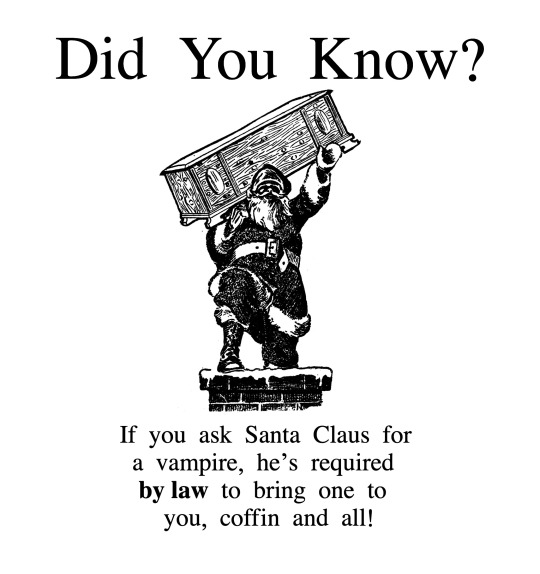
#Did You Know?#facts#trivia#Santa Claus#Santa#Christmas#presents#gifts#vampire#vampires#unreality#you can’t make this stuff up
2K notes
·
View notes
Text
I like that guillermo can just walk into baron and sire’s house when he is in a crisis. even when he was fully human he could do that. literally the oldest vampires in the world are like hello girl 💞 the specialest man . he is
#also the fact that most of the vampires get turned for so so so dumb random reasons and guillermo was shaking crying for twelve years .#sorry king#guillermo de la cruz#wwdits#wwdits season 5#wwdits spoilers
3K notes
·
View notes
Note
can you do one about vampire squids ? 🦑

Vampyroteuthis infernalis or Vampire Squid
It's (very dramatic) scientific name means "vampire squid from hell". However, the vampire squid is not actually a squid! It's actually the only animal in the Vampyroteuthidae family! It's separated into its own family because it can't change color or produce ink. Instead, it turns itself "inside out" (as shown above) to deter predators.
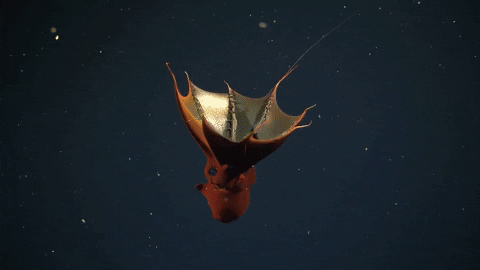
Proportionally, vampire squids also have the largest eyes compared to their body size! They eat mostly zooplankton, marine snow, and other organisms waste. They grow to be about the size of a football and live to be around 8 years old.

There's even evidence that vampire squids have been around since the Jurassic period- almost 200 million years ago!
#marine biology#marine ecology#animals#science#biology#animal facts#wildlife#marine life#ocean#fun facts#vampire squid#cephalopods#sea creature#squid#sea animals#sea creatures#sea animal#cool animals#zoology#ichthyology#sea#seas#oceans#the ocean#deep sea#jurassic period#fun animal facts#weird animal facts
1K notes
·
View notes
Text
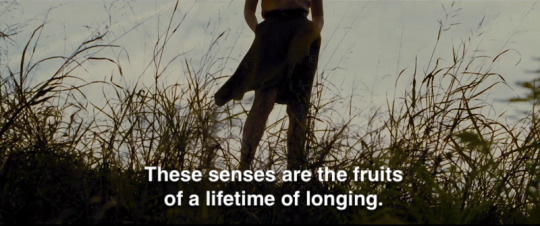



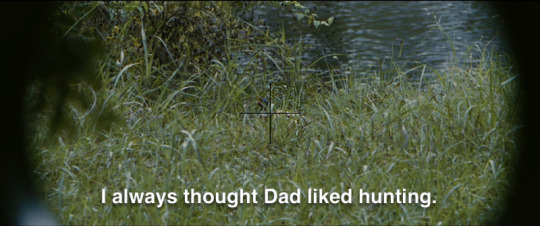



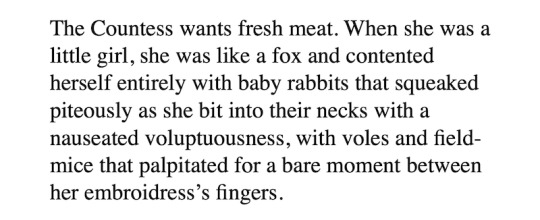





Stoker (2013) dir. Park Chan-wook and "The Lady of the House of Love" by Angela Carter
#stoker#mia wasikowska#park chan wook#vampires#horror#angela carter#gothic literature#comparatives#the lady of the house of love#ignore the fact that i've already made this exact post with pearl#*
1K notes
·
View notes
Text


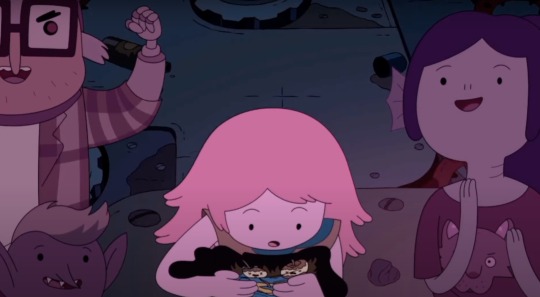
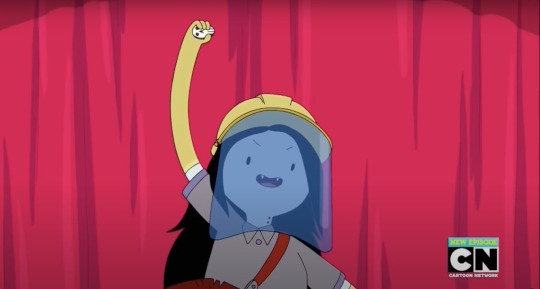
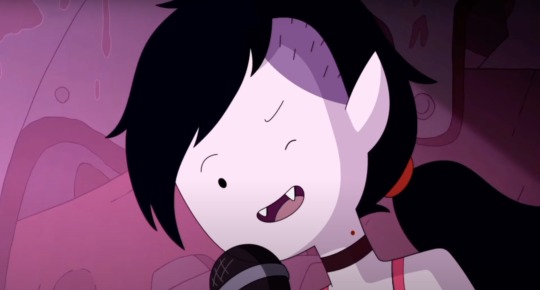

it's been literal years since either of these episodes aired so I can't possibly be the only person to notice but like. this is an intentional parallel, right. it has to be.
#I love having zero information about 90% of this show when I thought I watched it through entirely#I did in fact. not#like to think bonnie is consciously making a choice here bc its funny to me. anyway. goodbye again#binging is so fun#adventure time#princess bubblegum#bonnibel bubblegum#marceline abadeer#marceline the vampire queen#bubbline#smokey speaks#500#1k
1K notes
·
View notes